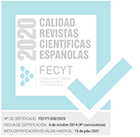Nomenclatural revision and syntaxonomical proposal for wetland peat vegetation in the Valdivian-Magellanian region
Abstract
Abstract. Although numerous descriptive studies have been published throughout the 20th century on peat communities in the Southern Cone of South America, the nomenclature applied to the different units recognised often fails to take into account the proposals of previous authors. Our aim is to clarify the nomenclature by applying the rules of the ICPN to propose a current syntaxonomy of the class Myrteolo nummulariae-Sphagnetea magellanici. After a bibliographic compilation of possible peatland associations from the part of South America between parallels 40º and 56º south, under Temperate and Boreal macroclimates, we have collected around 30 names of phytosociological associations and alliances containing an abundance of homonyms and nomina nuda. Following ICPN standards, we have eliminated duplications and established priority names over others, lectotypified some names and rejected others as nomen ambiguum. We have arranged the floristic groups in the recognised associations in synthetic tables, with some nomina nuda whose characterisation we interpret as doubtful, as a proposed syntaxonomical organisation of the phytosociological class.
The various communities recognised by the different authors who have worked in the territory can be divided into four physiognomic groups: A) cushion bogs, B) Sphagnum bogs C) “montane tundra” bogs and D) sedge-grass bogs. The syntaxonomic grouping we propose for the 13 associations recognised as nomenclaturally valid can be summarised as follows: a single class, Myrteolo nummulariae-Sphagnetea magellanici, is accepted, with a single order, Myrteolo-Sphagnetalia, and three alliances: Astelio pumilae-Oreobolion obtusanguli with seven associations (coinciding with type A), Gaultherio-Sphagnion magellanici with four associations (type B), and Abrotanello linearifoliae-Bolacion caespitosae with two associations (type C). We contest the validity of around 22 names of syntaxa of different ranks, while acknowledging that more studies are required, particularly to define and delimit type D peatland communities.Downloads
Article download
License
Lazaroa is an open access journal to promote global exchange knowledge. It facilitates unrestricted access to its contents from the moment of publication in its electronic edition. The originals published are property of the Universidad Complutense and it is mandatory to cite such source in case of total or partial reproduction. All contents are distributed under a Creative Commons License 4.0 (CC BY 4.0). This circumstance must be expressly stated in this way when necessary. You can check the informative version and legal text of the license.
Lazaroa does not charge for download or publishing any article.








